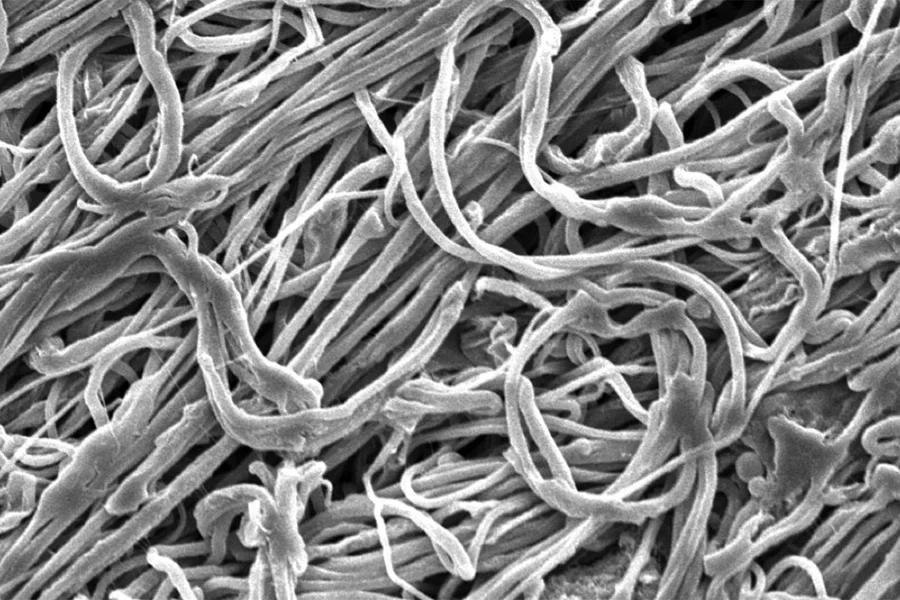Cross-linking a material? No…a process! Unlike many of my blogs which discuss different materials and their use specifically, I’d like to introduce a method commonly used in materials science to enhance the properties of polymers.
Imagine a plate of spaghetti—long, individual strands sliding past each other. Now, picture these strands connected to one another at certain points, creating a web-like structure. This, in essence, is what cross-linking does with polymers. Cross-linking serves as a transformative means to link molecular chains into a three-dimensional network. In other terms, it takes a chaotic collection of molecular chains and ties them together to create materials with remarkable properties increasing its strength and durability.
Polymers, the building blocks of countless materials, are chains of repeating units called monomers. Left on their own, these chains can remain loose and flexible, like uncooked spaghetti. While this can be useful for some applications, such as soft plastics, many industries require materials that are tougher, more stable, and less prone to melting or dissolving. This is where cross-linking comes in—it transforms linear or branched polymers into a three-dimensional network by chemically or physically connecting the chains.
The result resists high temperatures, doesn’t dissolve easily in chemicals, and can even stretch or bounce back without losing shape. Depending on how much cross-linking occurs, materials can range from slightly elastic, like rubber bands, to completely rigid, like epoxy resins.
Take, for example, car tires. They’re not just rubber; they’re cross-linked rubber. During a process called vulcanization, sulfur atoms link the rubber’s molecular chains together. This creates a material that is not only tough but elastic, allowing it to endure the wear and tear of driving on the roads. The medical field also benefits from this process. Cross-linked hydrogels are used in wound dressings and contact lenses because they can hold large amounts of water, making them both comfortable and effective. Even in my current research, I use the process of cross-linking to alter the properties of hydrogel to better match the mechanical properties of the brain!
Cross-linking might seem like a small tweak at a molecular level, but its impact extends much beyond that. As we continue to push the boundaries of what’s possible, cross-linking will undoubtedly remain at the heart of materials science.
More about cross-linking (with a visual example!):
Cover Image: Credits, https://news.mit.edu/2018/ultrafine-fibers-have-exceptional-strength-0105
![]()

